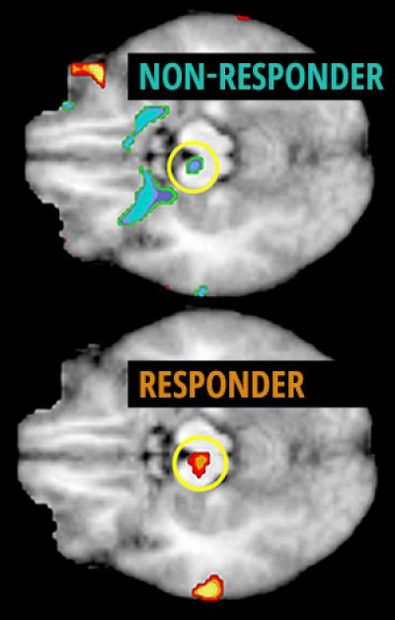
© EPASome psychopaths display disturbing symptoms from a young age, such the main protagonist in Lionel Shriver's book We Need to Talk about Kevin.
Brain scans can be used to identify children who may be potential psychopaths, new research has shown.
Scientists have found that certain areas of a psychopath's brain showed a reduced activity in response to images of others in pain.
The regions affected are those known to play a role in empathy, the ability to relate to other people's feelings.
Scientists say the patterns could act as a marker to single out children at a risk of becoming adult psychopaths.
A total of 55 boys aged 10 to 16 were assessed in the study.
Of these, 37 met the criteria for children with 'conduct problems' (CP) according to questionnaire answers provided by parents and teachers.
CP children display a plethora of antisocial traits including aggression and dishonesty.
Like the central character in Lionel Shriver's novel
We Need to Talk About Kevin, they can be callous and cruel.
Youngsters with conduct problems are not likely to follow in Kevin's footsteps and commit a school massacre, but the research findings suggest at least some could grow up to be psychopaths.
'Our findings indicate that children with conduct problems have an atypical brain response to seeing other people in pain,' psychologist Professor Essi Viding from University College London said.
'It is important to view these findings as an indicator of early vulnerability, rather than biological destiny.





Comment: Learn more about the many benefits of stimulating the Vagus Nerve:
Brain, heart and gut minds
Vagus Nerve Controls Intestinal Inflammation
Stimulating the vagus nerve: Memories are made of this
Polyvagal Theory, Sensory Challenge and Gut Emotions
Research Shows Vagus Nerve Stimulation Can Help Reorganize Brain
The Neurobiology of Grace Under Pressure: 7 habits that stimulate your vagus nerve and keep you calm, cool, and collected
Also, to accrue the benefits of vagus nerve stimulation, try out the exercises of the Éiriú Eolas breathing and meditation program.